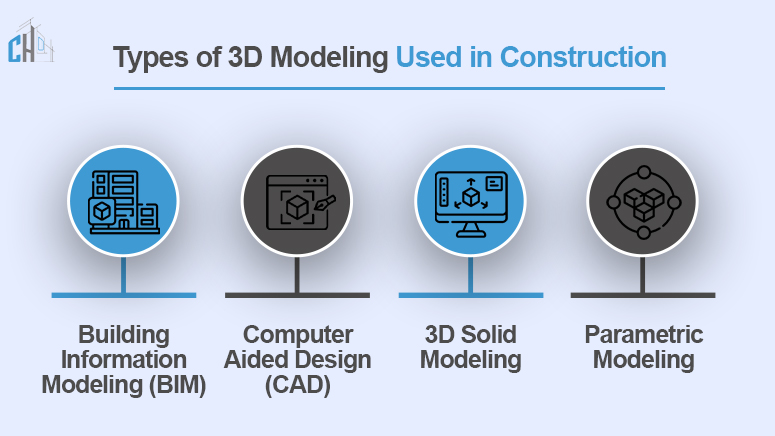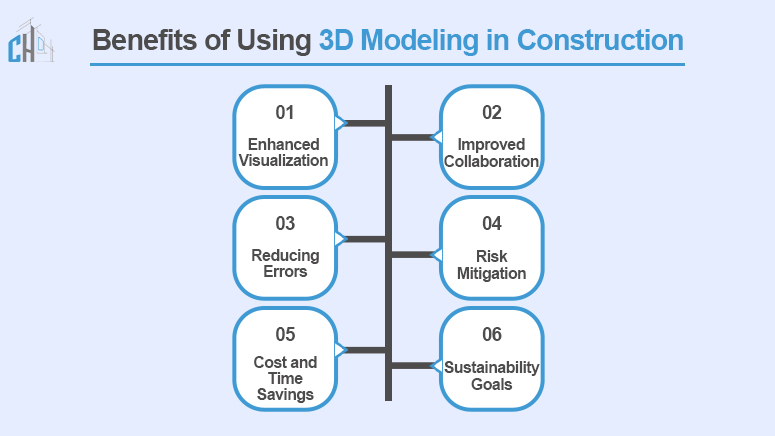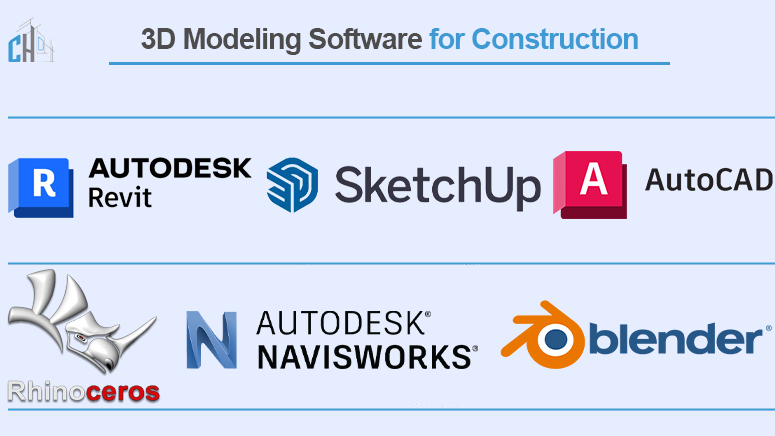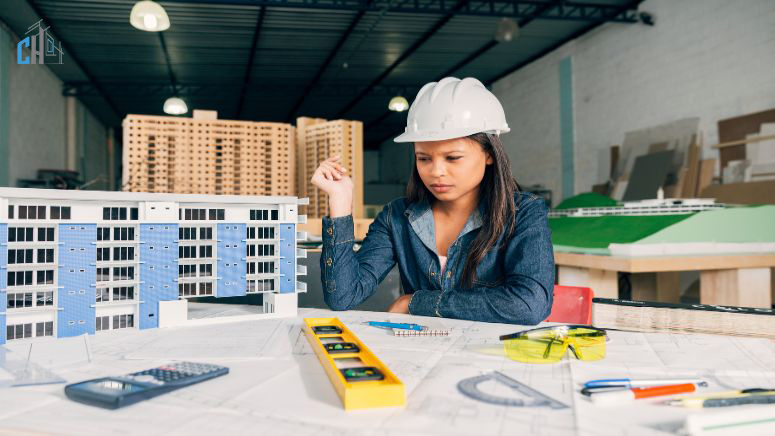Quick summary: 2025 will see the 3D modeling revolution in construction, enhancing decision-making with AR and VR. Where outsourcing meets demand, improving efficiency, and shaping the future of the AEC industry.
The construction industry has been going through an age of transformation. This shift in the industry landscape is because 3D modeling is standing at the forefront of this revolution.
Hence, the stakeholders are now making informed decisions through real-time changes. Hence, in 2025, the 3D modeling part of the AEC industry has become more of a necessity rather than a trend.
Taking these architectural 3D models has the potential of encompassing both exterior and interior spaces. Architectural 3D modeling in general offers one with a holistic understanding of the project ranging from spatial layouts to material choices.
Hence, this brings to making more informed decisions, both for the client and the designers. The article explores the nitty-gritty of 3D modeling in construction, focusing on key aspects such as architectural 3D modeling, 3D BIM modeling solutions, and the significance of outsourcing 3D services.
What is 3D Modeling in Construction?
3D modeling involves creating a digital version of 3D graphic design for a structure or space in the physical world. The technology enables architects, engineers, and construction professionals to visualize and interact with structures in ultra-realistic detail before construction. 3D models provide depth and dimension to designs while it’s not possible with visualizing a 2D draft creating a holistic view of what a project is about.
3D modeling in construction serves a much bigger purpose than just visuals. This improves the workflow, reduces errors, and helps in finding test design flaws early on. This technology benefits all phases of a construction project — from planning and analysis through execution and maintenance.
Types of 3D Modeling Used in Construction
There is no one-size-fits-all 3D modeling. Different features of the construction process require different types of 3D design construction practice. These are the most frequently used:

Building Information Modeling (BIM)
BIM is the most sophisticated build up of 3D modeling in the construction. It produces a virtualized, digital representation that contains not only the physical components of a structure but also the functionality of the components.
Key Features of BIM:
Cross functional team collaboration tool
Functionality for clash detection to reduce errors
Track through the lifecycle from design to maintenance
BIM brings construction to the true collaborative environment it was meant to be and now we are getting real efficiencies in the way projects are executed.
Computer-Aided Design (CAD)
CAD is a multi-purpose technology for producing accurate 3D (and 2D) drafts and technical drawings.
Key Features of CAD:
Very detailed representations illustrative of structures
Great for complex designs or a detailed section of a complete project.
Flexibility to work with other modeling tools
The CAD is paired with the BIM nowadays in almost all the modernized and advanced construction.
3D Solid Modeling
This is a geometry first keypoint method, so it focuses even on volume, to check if the structure can withstand the load. It can predict the behavior of materials under different environmental and stress environments.
Parametric Modeling
This kind of modeling emphasises on the interaction between various elements of a design. If you change one element, the software changes all the components, which are more relatable. This is perfect for projects that need to be highly tuned.
Benefits of Using 3D Modeling in Construction
What are the benefits of 3D modeling in construction? Here is what happens in it and how incredible impact it has on the industry:

Enhanced Visualization
Now, with 3D models, stakeholders can view the project so clearly, it may look like the building is already built. This removal of ambiguity, which is common place with traditional 2D plans…
Improved Collaboration
2D models can still be improved and a 3D model allows (in most cases) who everyone working on the project to be looking at the same document, which vastly improves communication. Architects, engineers, and contractors can collaborate seamlessly with live updates.
Reducing Errors
By quickly identifying any potential design flaws, 3D modeling dramatically decreases the amount of potentially costly remedial work later in the process. Applications such as clash detection in BIM help to ensure that structural components line up correctly.
Risk Mitigation
With better visualization and less error, construction outcomes become more predictable, which reduces risk overall.
Cost and Time Savings
The potential time spent on revisions is lowered by constructing your project in advanced 3D designs to properly predict material needs and construction timeframes.
Sustainability Goals
3D models (or blueprints) allow for the exact measurement of materials that are needed and a simulation of how much energy will be used and what environmental impact will result, reducing waste at every turn.
Evolution of Architectural 3D modeling
Tracing back to the times of construction, the industry has evolved from hand-drafted drawings to computerized drafting systems. In its nascent stages, 3D modeling was a labor-intensive process which was manual drafting and limited use of CAD tools.
However, there was an integration of more sophisticated tools and computational power which marked a significant leap forward. In the 20th century, the advent of BIM provided designers with a holistic approach, ranging from visual representation and crucial data related to construction, material, and project management.
This has been later evolved into cloud computing and advanced algorithms to accelerate the design process which enables architects to concretize more complex projects. In between all of this, the value of architectural 3D modeling has increased its value through a multitude of forms by giving architects means to communicate and conceptualize their designs.
Over time, there are various types of 3D modeling that have helped in enhancing design solutions. Conceptual 3D Modeling allows architects to develop initial design ideas. Later, Architectural 3D Modeling offers a detailed presentation of interior and exterior spaces helping in material selection and spatial understanding.
This has grown to BIM Modeling and Virtual Reality (VR) Systems for an immersive experience. As it is moving forward, architects develop this into 3D Printed Models giving them an even more tangible representation of designs.
They can be formulated in many formats, which consist of primitive modeling – using basic shapes and efficiency; polygonal modeling – representation through 3D coordinates and NURBA – forming complex 3D shapes through a mathematical model.
Other ways, such as 3D CAD modeling involve converting 2D drawings into virtual models with actual physical properties. This later helps one in accuracy and flexibility.
Way Forward for Architectural Design 3D Models
At the cusp of developing technology, the industry of architectural design 3D models is at an all-time high. It has been becoming more intricate and realistic with the involvement of virtual reality (VR) and augmented reality (AR).
In this involvement, the designers and architects are provided with one more medium of expression, one that is there and one to come for the people of the AEC industry.
Hence, we see there is a spike in 3D construction modeling needed for the clients and the designers. As it is more in the service sector in the AEC industry, it is better suggested to outsource 3D modeling services to people who have been handling it well.
Industry Demand and Supply
In this age of evolution and transformation, the need for architectural 3D modeling and 3D CAD modeling services is more important than ever. All the construction firms and architecture offices are recognizing the value of these services in streamlining their projects.
Hence, it is best recommended to outsource 3D modeling to companies that can encompass a range of offerings. This can include 3D renderings, virtual tours, and interactive presentations.
This can be later supported with multiple construction management tools and methods that can facilitate collaboration through the project lifecycle for improved decision-making skills.
Architectural 3D Modeling and its Offerings
As individuals in the AEC industry understand the use case of architectural 3D modeling and Building information modeling (BIM) service, there have been explorations of construction attitudes and architectural components. Other than station 3D renderings, the people who are outsourcing virtual flythroughs, flyovers, and real-time interactive presentations.
Through this, the architects can outsource their presentations as well to convert them into a more engaging and understandable format. Hence, this outsourcing model for construction professionals gives them a range of tools, formats, and mediums to communicate their intent by catering it to different project requirements and client preferences.
3D Modeling Software for Construction in 2025
Choosing the right 3D modeling software is crucial for your project. Here are the top options for 2025:

Autodesk Revit
Revit, leader in BIM is used extensively both by professionals.
- Great for 2D and 3D designs.
- Strong collaboration tools.
SketchUp
SketchUp is free, super easy to use, and a great starting point for beginners.
- Excellent plugins.
- Ideal for architectural design + visualization
AutoCAD
A precise modeling and drafting tool, AutoCAD is the industry standard.
- Supports 2D and 3D designs.
- Well-suited for intricate design and development tasks.
Rhino
Rhino is awesome if you are looking for more advanced parametric and organic 3D shapes.
- Handles complex geometries.
- Customizable with plugins.
Navisworks
Navisworks — Great for 3D coordination and clash detection
- Seamlessly integrate within Autodesk processes.
Blender
There are a lot of open-source tools available to avail, one of the best among them is Blender which is providing powerful 3D modeling, animation, rendering, post-production, interactive creation, and playback tools free of cost.
- Awesome for modeling and animating.
3D BIM Modeling Solutions: The Backbone of Modern Construction
3D construction modeling and architectural 3D modeling services have become a new base for the construction industry. It has been categorized as a new standard deliverable for all modern construction projects.
This helps in developing intelligent 3D models that communicate essential information about the building – leading it from design intricacies and material specifications. This further provides communication, minimizes errors, and increases the overall efficiency of the construction project.
Read also: Future of BIM in Construction: What Changes Are Expected?
Strategizing 3D Modeling Solutions
The use of 3D modeling solutions has taken in the basic workflow method of contemporary design and construction workflow, helping architectural projects to be conceived and executed. Architects and individuals can strategically choose modeling platforms that align with the project’s complexity, scalability, and collaboration needs.
When one adapts to the 3D modeling solutions and leverages their construction methodology, it provides one with a centralized database of building information, projecting them with the lifecycle of construction and its timeline.
This also can be used strategically for 3D modeling presentations, cost estimation, construction scheduling, and incorporating other valuable information.
Hence, the strategy of using 3D modeling solutions and outsourcing them to consultancy is about wisely aligning technology, expertise, and project goals to create a dynamic framework that positions a specific architectural project for future success in an ever-evolving technological landscape.
Defining Accuracy Through Architectural 3D Modeling
3D construction models help one to create dimensionally accurate models that provide detailed models, serving as a blueprint for construction. It also gives one the ability to detect and resolve potential problems hence making it time-efficient and cost-effective.
This approach provides the industry with a holistic understanding of the project that is going to be built with a humble understanding of services, architectural intent, potential challenges, and the building process.
The Magic of Outsourcing 3D Modeling Services
All in all, the architectural 3D modeling process helps one with a lot of benefits. But, in its tradeoff, it may take up a lot of time for the architect or designer to prepare them. Hence, to profitably use this medium to increase the efficiency of the project, it is advisable to delegate these functions to full-fledged 3D BIM modeling and 3D CAD modeling consultancy.
This trend has gained traction in 2025, where construction offices and architecture firms are understanding the benefits of collaborating with specialized service providers.
This helps one in reducing their learning time, and scope of errors, improves the efficiency of the project, and enables the firms to focus on their core competencies. Along with this, the architecture firms and construction offices are getting a chance to formulate a community of skilled professionals who are moving towards the final intent of the construction industry.
As we move through 2025, the role of architectural 3D modeling is more important than ever. It will bring a paradigm shift in times like 2025, in a way architectural projects are envisioned, managed, and executed.
This onset has brought in technology from architectural 3D modeling to advanced BIM solutions which underscores a pivotal role in moving forward of the construction industry and its processes.
Individuals in the AEC industry have begun to realize the potential architectural 3D modeling holds. Hence, the AEC industry is addressing and embracing these technological developments and adopting these new methods that engage utmost precision and streamline collaboration. For construction professionals, it is best recommended to outsource these services to mitigate collaboration and precision.
Conclusion
Introducing Architectural 3D Modeling helps one in architectural precision, informed decision-making, and integrating AR and VR which redefines design possibilities. Outsourcing improves efficiency, reduces errors, and improves professionalism. These process improvements are creating a dynamic future in manufacturing, where technology and collaboration combine together for the best results.





